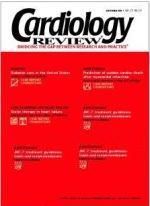Issues regarding indirect methods of measurement
Pulse pressure often increases because there is an age-associated progressive increase in systolic pressure and a decline in diastolic pressure. This change is associated with increased mortality and morbidity from cardiovascular outcomes. Several studies, including the Framingham Heart Study and the Systolic Hypertension in the Elderly Pro-gram (SHEP), have shown an increased risk of cardiovascular events, including heart failure and strokes, with systolic hypertension.1,2
It has been proposed, and several studies have supported the notion, that injury to endothelial cells dampens the response to vasodilators, including acetylcholine. Hence, Ceravolo and colleagues (page 38) sought to determine if there is a correlation between widened pulse pressure and altered response to acetylcholine infusion. They report an observation that widened pulse pressure is related to endothelial dysfunction in hypertensive patients. An inference is made regarding the finding and its link to cardiovascular morbidity and mortality.
The authors studied 262 hypertensive patients without previous antihypertensive treatment using direct intra-arterial infusions of acetylcholine and sodium nitroprusside as surrogates of endothelium-dependent and -independent vasodilatation, respectively. Vasodilatation was assessed by measuring the change in forearm volume as previously performed by other investigators.
During the intra-arterial infusion of acetylcholine and sodium nitroprusside, the investigators found no change in systemic blood pressure. There was no relationship between sodium nitroprusside-induced endothelium-independent vasodilatation and pulse pressure. A clear inverse correlation between acetylcholine-induced endothelium-dependent vasodilatation and pulse pressure was found, however; those with the widest pulse pressure had the least blood flow response to acetylcholine.
This study did not examine this relationship in healthy controls without hypertension. Normal controls, however, were previously stud-
ied by Panza and colleagues, who showed a greater blood flow response to acetylcholine infusion when compared with hypertensives not taking antihypertensive agents.3 It is unclear if an inverse correlation between the forearm blood flow and the pulse pressure noted in hypertensives in the study by Ceravolo and colleagues can be extended to normal controls.
The method of evaluating the forearm blood flow through volume changes in the forearm has been used as a surrogate to assess the changes in vascular resistance by many authors. Forearm blood flow and vascular resistance are often determined by measuring the circumferential swelling at one point in the forearm rather than total change in forearm volume. It is not clear if this method of indirectly determining vascular resistance is valid across a wide spectrum of subjects with varying body mass index, muscle mass-to-fat ratio in the arm, number and caliber of venules in the arm that would affect the venous capacitance, and so on. The validity of the conclusions derived from these studies remains to be determined.
Conclusion
It would be interesting to perform a longitudinal follow-up of these study patients and normal controls to determine whether the findings materialize into clinically relevant outcomes. Moreover, the term endothelial dysfunction is often used, but it is a nondescript term that does not address the underlying mechanism. A diverse patient population with the same phenomena may have different underlying mechanisms. It is only through these studies that we can elucidate the underlying pathophysiology.
